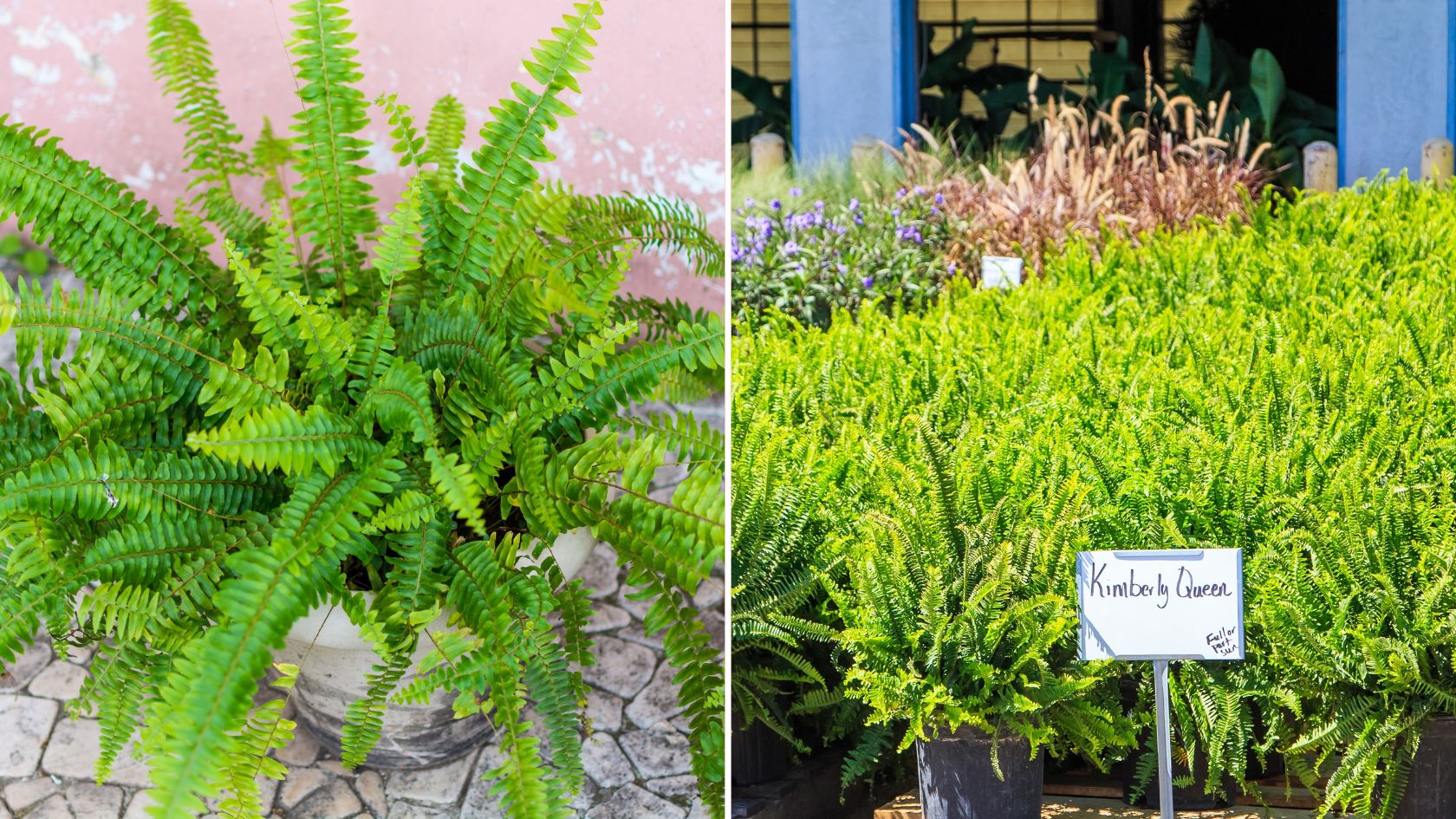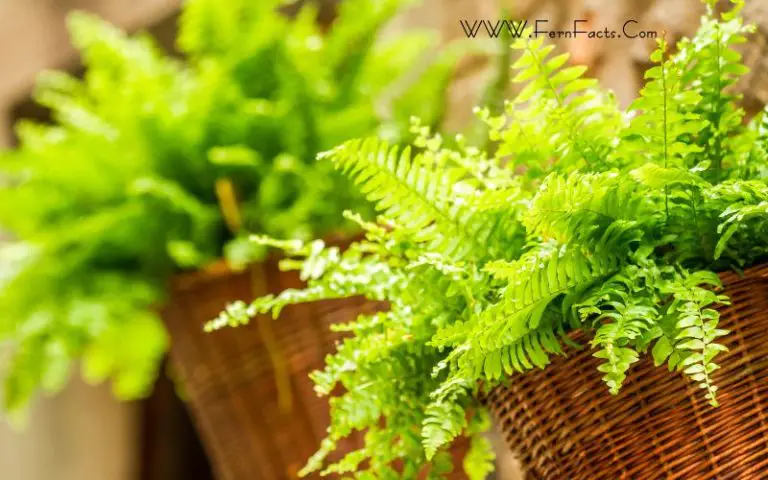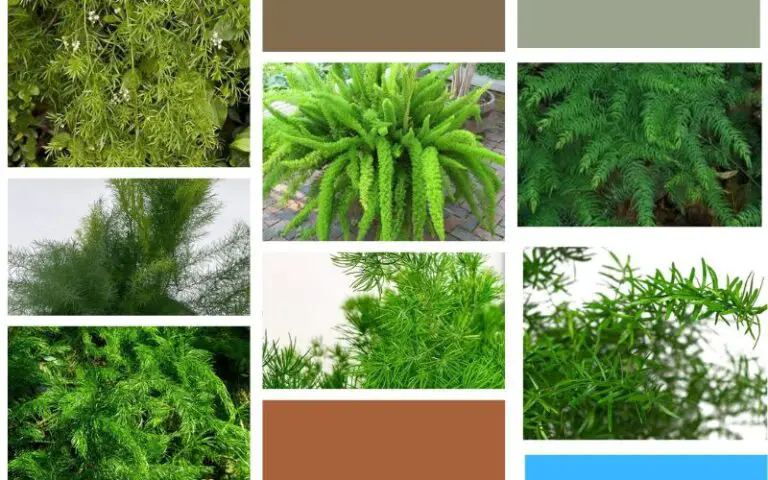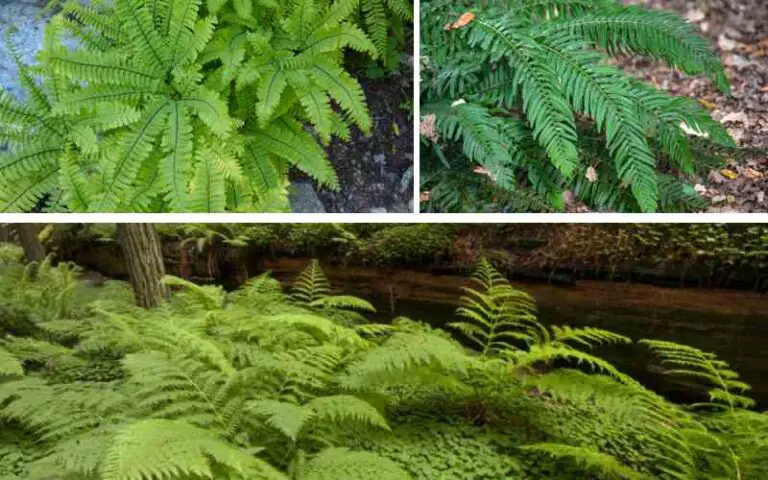Kimberly Queen Fern vs Boston Fern: 8 Major Differences
The Kimberly Queen Fern boasts upright fronds, while the Boston Fern features arching fronds. Both are popular indoor plants, yet they differ in appearance and care requirements.
Choosing the right fern for your home involves understanding the subtle differences between varieties.
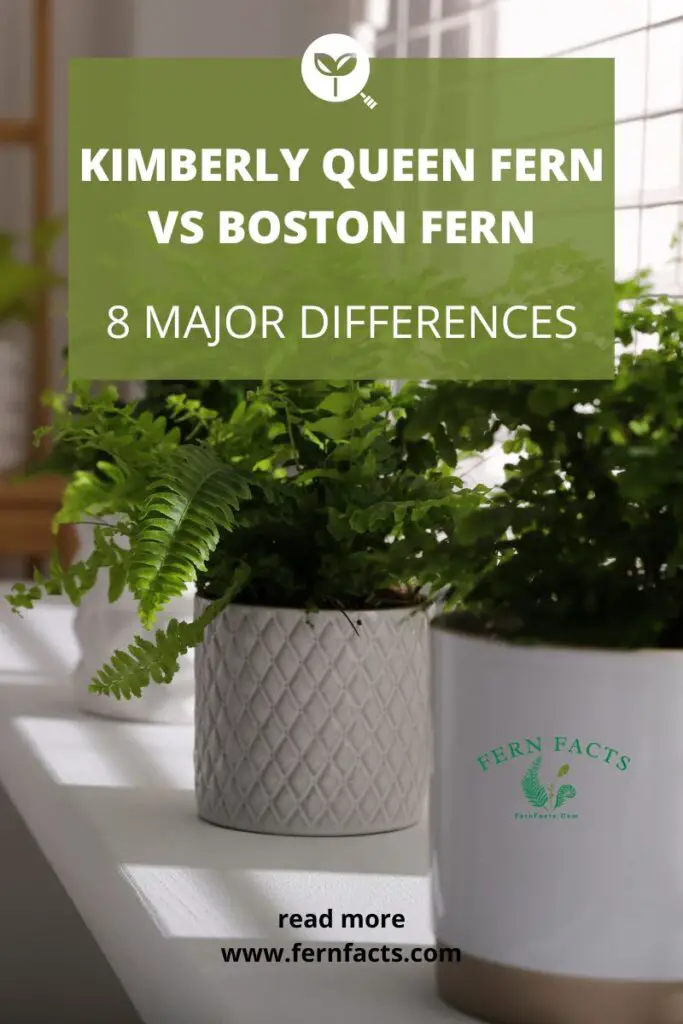
The Kimberly Queen Fern, with its straight and narrow fronds, is known for its air-purifying abilities and ease of care, making it a resilient choice for indoor gardeners.
On the other hand, the Boston Fern is celebrated for its lush, feathery fronds that gracefully droop, creating a classic elegance.
It thrives in high humidity and consistent moisture, appealing to those who enjoy a more attentive gardening style.
Each plant adds a distinct touch of greenery to your space, but depending on your home environment and lifestyle, its care preferences might sway your choice.
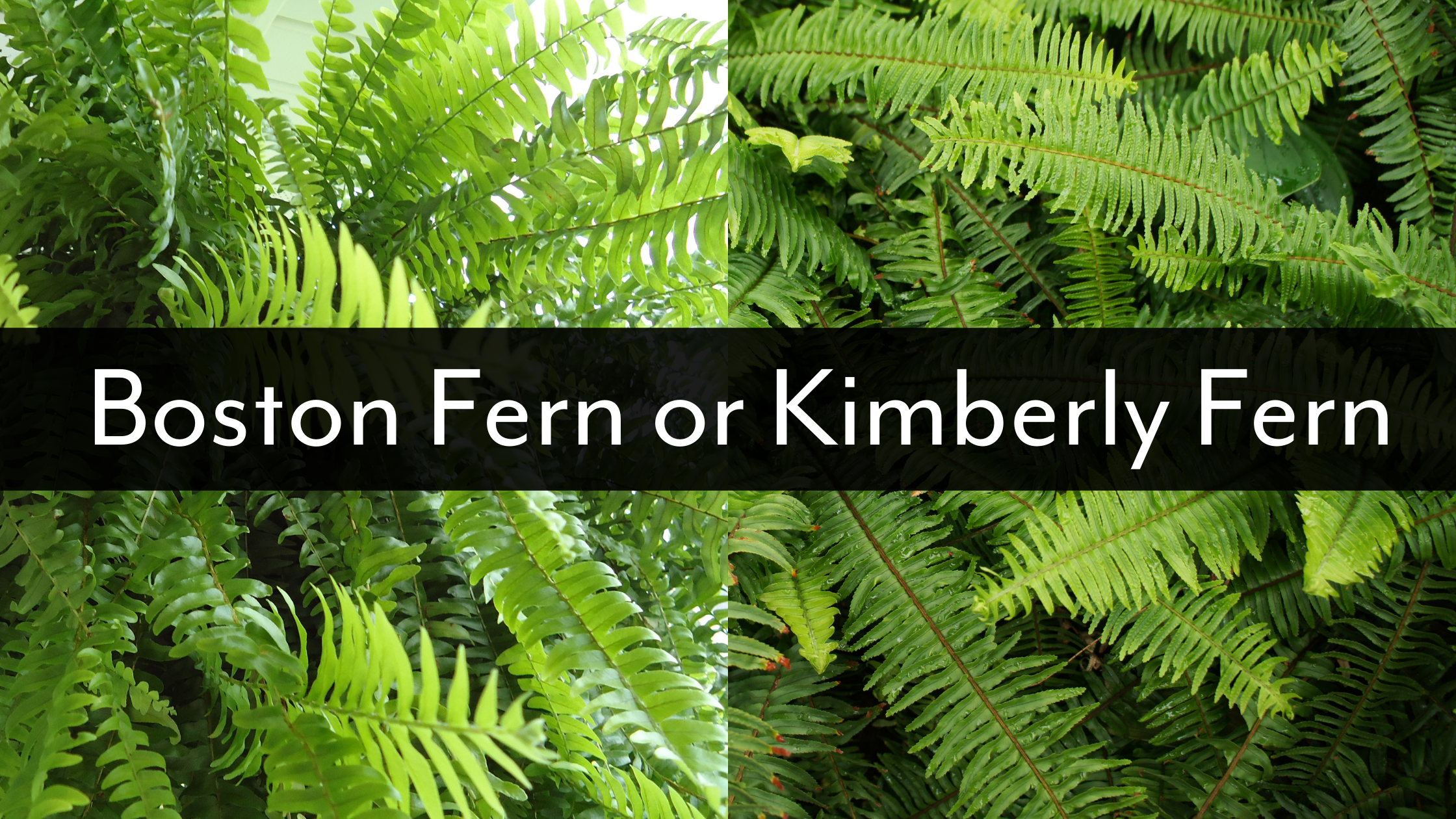
Physical Characteristics
When exploring the world of indoor greenery, the Kimberly Queen Fern and Boston Fern emerge as popular choices. Each plant boasts unique physical traits that cater to different preferences and home environments.
Understanding the physical characteristics of these ferns can help plant enthusiasts choose the right fern for their space.
Leaf Structure
The Kimberly Queen Fern features upright, sword-like fronds that create a structured and tidy appearance. Bold and resilient, the leaves stand strong against indoor elements.
In contrast, the Boston Fern sports lush, arching fronds with a delicate, feathery texture. The leaves gracefully drape over the pot, offering a soft, classic look.
Size And Growth Habit
The size and growth habits of these ferns vary significantly. The Kimberly Queen Fern grows tall and compact, ideal for narrow spaces.
It can reach up to 3 feet in height and width. The Boston Fern, on the other hand, grows wider and more horizontally, often spreading up to 5 feet.
This makes it perfect for hanging baskets or as a shelf plant where it can cascade naturally.
| Fern Size Comparison | |||
| Fern Type | Height | Width | Growth Habit |
|---|---|---|---|
| Kimberly Queen Fern | Up to 3 feet | Up to 3 feet | Upright and Compact |
| Boston Fern | 1-3 feet | 2-5 feet | Wide and Horizontal |
Whether you prefer the Kimberly Queen’s sturdy elegance or the Boston’s gentle cascade, both ferns offer distinct charm and personality through their physical characteristics.
You can also read Monstera Leaves Curling: Top Fixes for Lush Growth!
Care Requirements
Understanding the care requirements of houseplants ensures they thrive in your space. The Kimberly Queen Fern and Boston Fern are popular indoor plants.
Each has unique needs for optimal growth. Let’s explore these requirements to keep your ferns lush and beautiful.
Light And Temperature
Both ferns prefer bright, indirect light. Direct sunlight can harm their delicate fronds. A north-facing window works well for these plants.
Ideal temperature ranges are 60-75°F (15-24°C) for Kimberly Queen Ferns and 55-75°F (13-24°C) for Boston Ferns. Protect them from drafts and sudden temperature changes.
Watering And Humidity
- Keep the soil consistently moist, but not soggy.
- Water when the top inch of soil feels dry.
- High humidity is crucial, especially for Boston Ferns.
- Consider placing a humidifier nearby or misting it regularly.
Soil And Fertilizer
For these ferns, choose well-draining soil rich in organic matter. A peat-based mix works well. Fertilize every month during the growing season.
Use a balanced, liquid fertilizer diluted to half-strength. In winter, feeding is reduced as plant growth slows down.
Pest And Disease Resistance
Understanding the pest and disease resistance of ferns is crucial for gardeners.
It helps keep plants healthy. Kimberly Queen Fern and Boston Fern are popular choices. Each has unique resistances and vulnerabilities.
Common Pests
Both ferns face threats from common pests. These include:
- Spider mites: Tiny pests that cause yellowing leaves.
- Mealybugs: White, cotton-like bugs that weaken plants.
- Scale insects: Hard-shelled bugs that stunt growth.
The Kimberly Queen Fern is often less attractive to pests. Its sturdy foliage is a deterrent.
The Boston Fern’s dense fronds can attract more pests, making vigilance necessary.
Disease Susceptibility
Ferns can fall victim to various diseases. Common issues include:
- Fungal infections: Overwatering can lead to root rot.
- Bacterial wilt: Causes leaves to droop and decay.
The Kimberly Queen Fern is more disease-resistant. Its ability to handle dry conditions reduces fungal risks.
Boston Ferns require more humidity, which can increase the chance of disease if not managed well.
Propagation Methods
Do you want to grow more ferns? Kimberly Queen Fern and Boston Fern have unique ways of creating new plants.
It’s simple and fun. Let’s explore the methods!
Division
Dividing is the easiest way to get more ferns. It’s like making a copy of your favorite plant.
Here’s how:
- Take the fern out of its pot.
- Find the natural splits in the root ball.
- Gently pull the sections apart.
- Plant each section in new soil.
- Water it well and watch it grow.
This method works great for both fern types. It gives you new plants fast!
Spores
Ferns have tiny dots under their leaves called spores. You can use them to grow new ferns. Here’s the step-by-step:
- Wait for the spores to turn brown.
- Shake them onto a piece of paper.
- Spread them on top of moist soil.
- Cover with plastic to keep humidity.
- Be patient. It takes time to see growth.
Spores are nature’s way of making baby ferns. It’s slower but exciting!
Rhizomes
A rhizome is a stem that grows sideways underground. Both ferns have them. To propagate:
- Find a rhizome poking out of the soil.
- Cut a piece with at least one leaf on it.
- Plant it just below the soil surface.
- Keep the soil moist and warm.
- Soon, you’ll see a new fern growing.
Rhizomes are like secret passages for ferns to spread. It’s a cool way to multiply your green friends!
You can also read this post: All about Syngonium Care
Indoor And Outdoor Use
Choosing between Kimberly Queen Fern and Boston Fern?
Let’s explore their best uses indoors and outdoors. Both ferns can thrive in various settings, but knowing their specific needs will help you decide where to plant them.
Best Locations
Kimberly Queen Ferns shine indoors. They love bright, indirect light. For the best effect, place them near a window with sheer curtains. Outdoors perform well in shaded areas that mimic their natural, tropical environment.
Boston Ferns are more flexible. Indoors, they prefer humid environments like bathrooms. They can also hang in shaded porches or patios. This makes them excellent for both indoor and outdoor settings.
Container Vs Ground Planting
Choosing between pots or planting in the ground? Here’s what you need to know:
| Type | Container | Ground |
|---|---|---|
| Kimberly Queen Fern | Great for pots, needs good drainage | Not recommended, prefers containers |
| Boston Fern | Ideal for hanging baskets | Can thrive in the ground in suitable climates |
Containers offer more control over soil quality and moisture, which is crucial for both fern types. However, if the outdoor conditions are right, ground planting might suit Boston ferns.

Aesthetic Qualities
The allure of indoor greenery often boils down to its aesthetic qualities. Ferns, with their lush green fronds and graceful growth, add a touch of elegance to any space.
Today, let’s delve into the distinctive visual characteristics of the Kimberly Queen Fern and the Boston Fern.
Visual Appeal
The Kimberly Queen Fern boasts upright, sword-shaped fronds. Its leaves remain erect, giving it a regal appearance. This fern’s bold structure makes it a standout feature in any room.
In contrast, the Boston Fern features arching fronds with delicate, feathery leaves. Its classic look has a softening effect on its surroundings.
This fern’s cascading growth pattern makes it ideal for hanging baskets.
Versatility In Design
Kimberly Queen Ferns fit well in modern and minimalist decor. Their clean lines complement sleek furniture and geometric designs. Use them to create an urban jungle vibe or to accentuate contemporary spaces.
The Boston Fern’s versatile nature thrives in both traditional and bohemian settings. Its lush foliage pairs well with vintage accents and eclectic collections, making it perfect for adding greenery to cozy corners or bookshelves.
| Fern Type | Visual Appeal | Versatility |
|---|---|---|
| Kimberly Queen Fern | Erect, sword-shaped fronds | Modern, minimalist decor |
| Boston Fern | Arching, feathery fronds | Traditional, bohemian settings |
Frequently Asked Questions
Is A Kimberly Queen Fern A Boston Fern?
No, a Kimberly Queen fern is not a Boston fern. They are different species; Kimberly Queen ferns have more upright fronds, while Boston ferns display arching fronds.
Do Kimberly Ferns Like Sun Or Shade?
Kimberly ferns thrive in partial to full shade, avoiding direct sunlight. They prefer bright, indirect light for optimal growth.
How Do You Take Care Of A Queen Kimberly Fern?
To care for a Queen Kimberly fern, provide bright, indirect light and maintain high humidity. Water regularly to keep the soil moist but not soggy. Use well-draining potting mix and fertilize monthly during the growing season. Avoid cold drafts and temperatures below 50°F.
Trim dead fronds to encourage growth.
What Fern Sheds The Least?
The Japanese Painted Fern typically sheds the least among common ferns. Its low-shedding quality makes it ideal for tidy indoor environments. Opt for this fern if minimal cleanup is a priority.
Conclusion
Deciding between the Kimberly Queen Fern and the Boston Fern comes to personal preference and care requirements.
The Kimberly Queen offers a more upright growth, while the Boston Fern boasts lush, hanging fronds. Both add a touch of greenery and purify the air, making any space more inviting.
Choose the one that best fits your indoor garden’s look and your lifestyle. Happy gardening!

